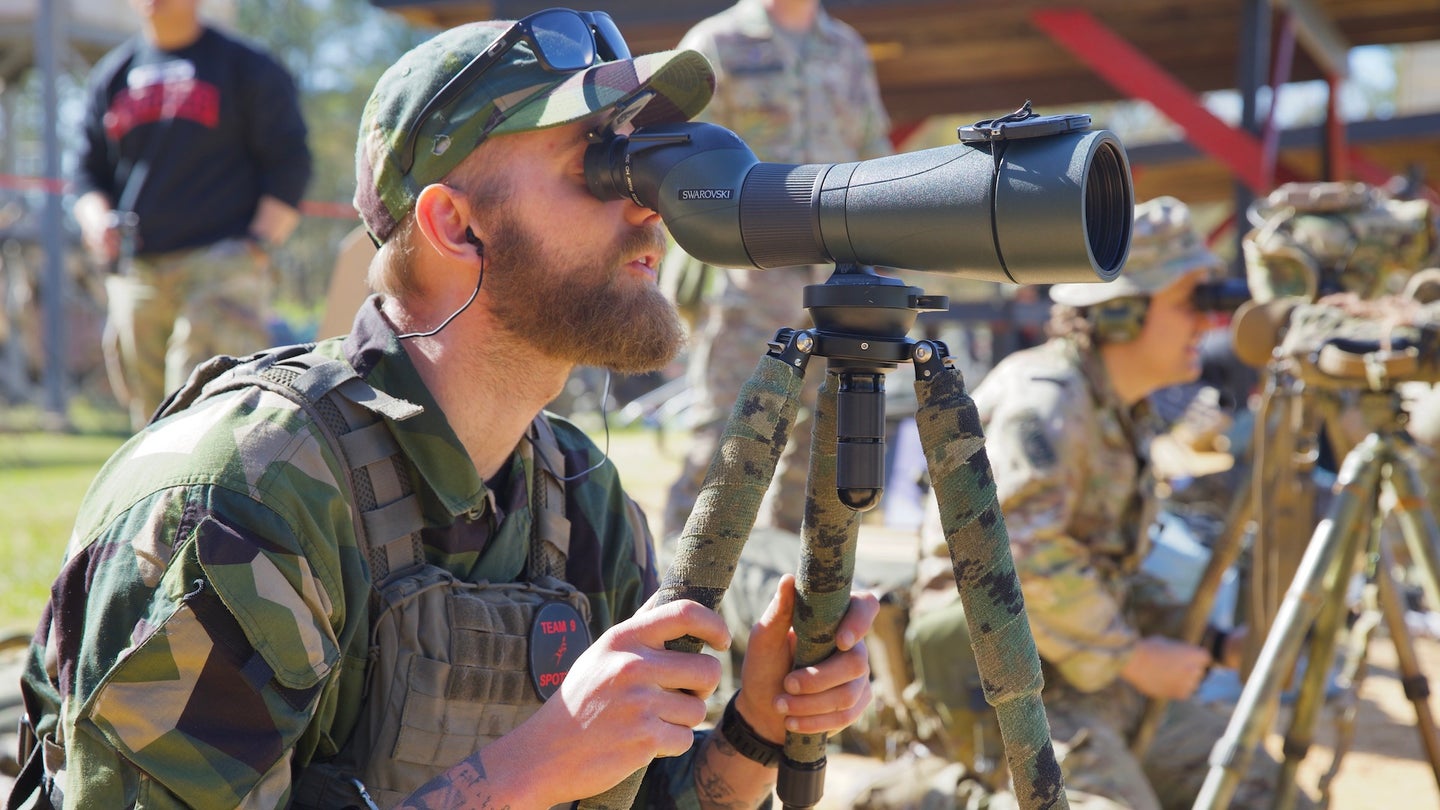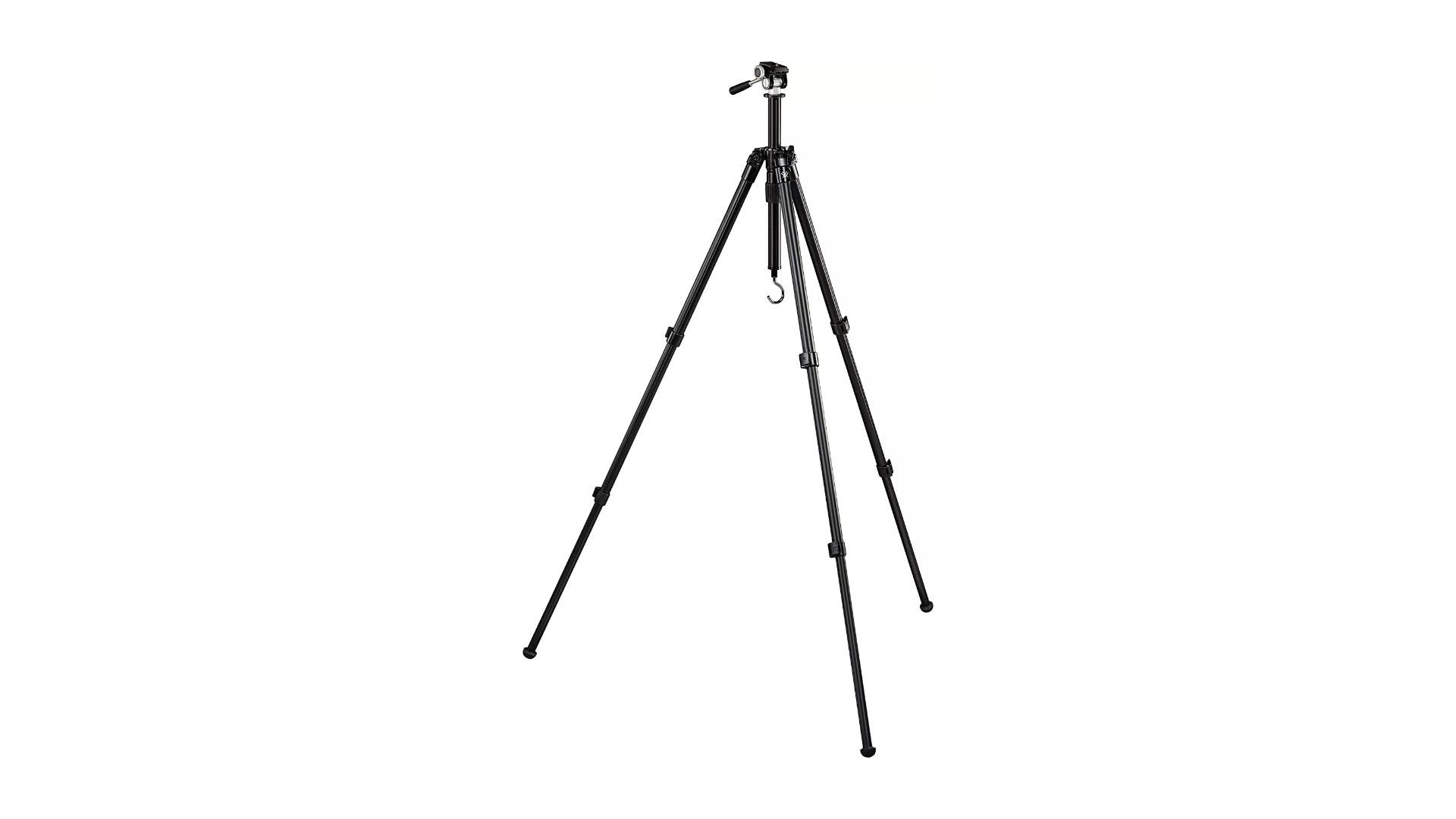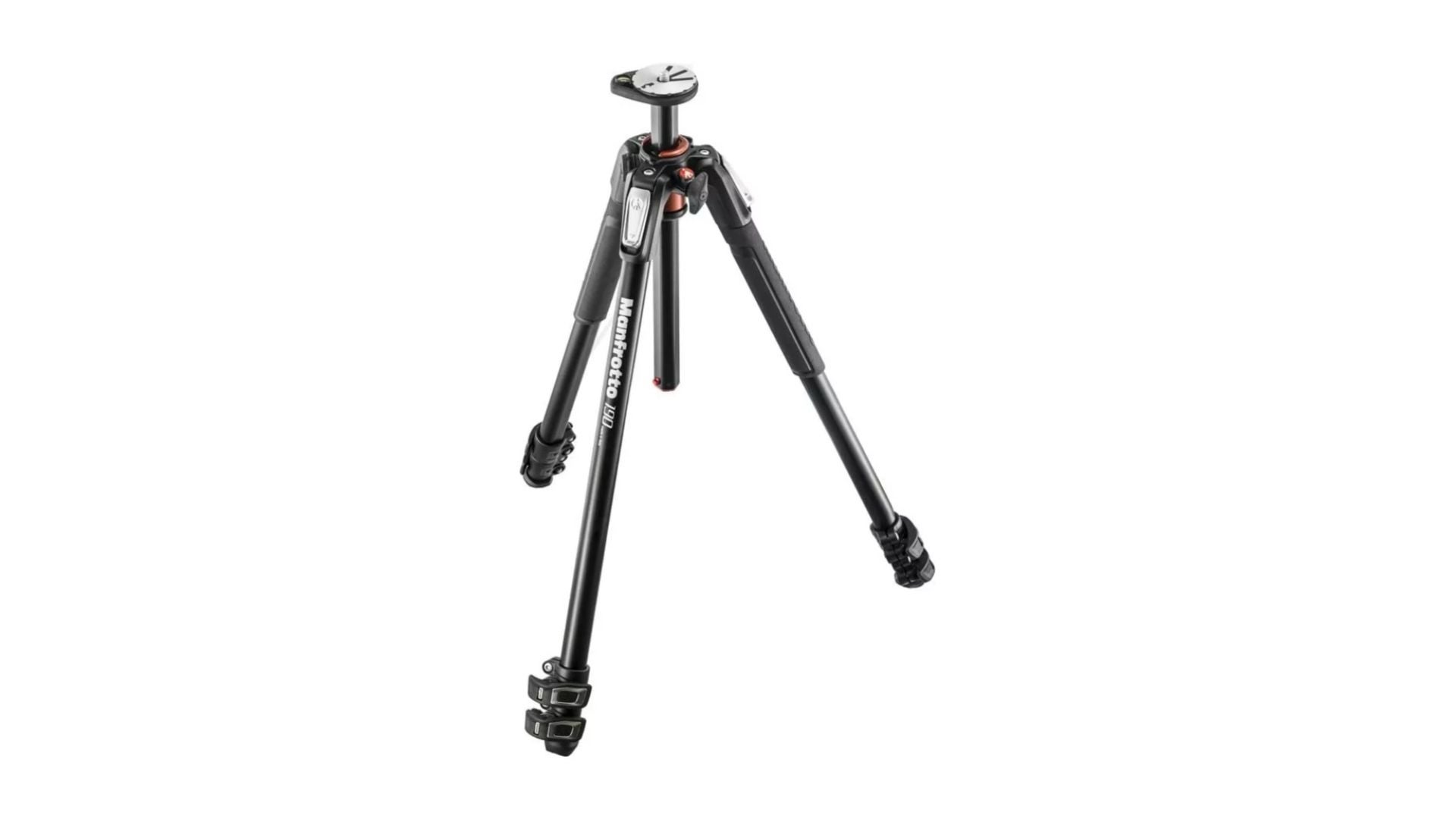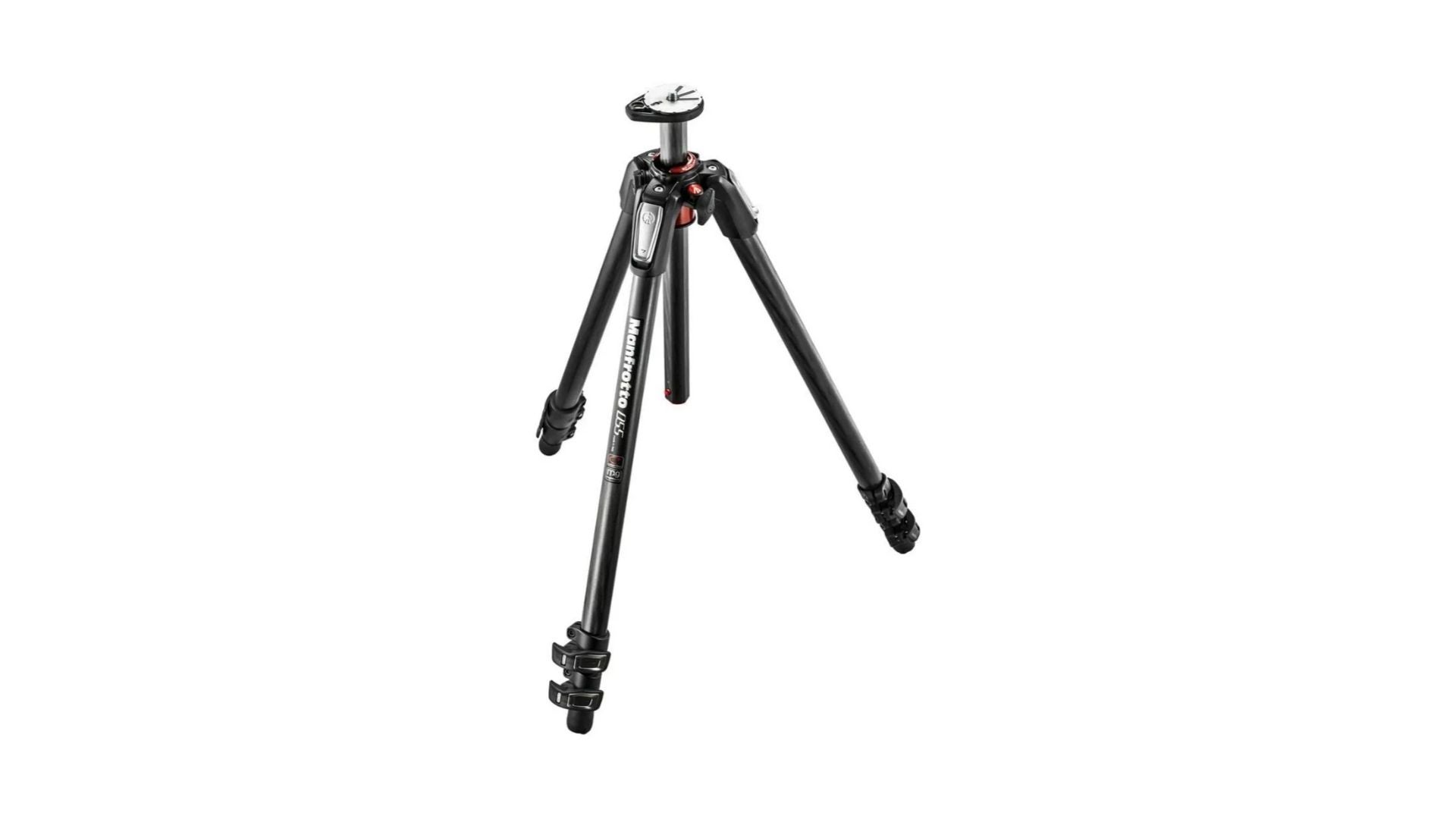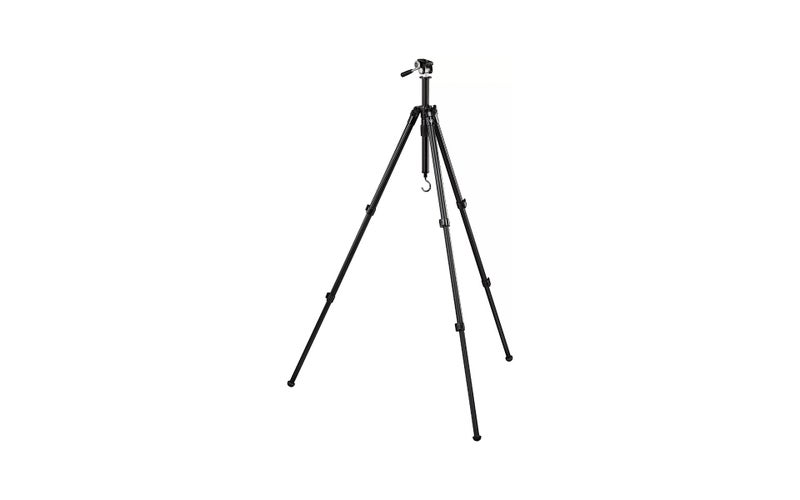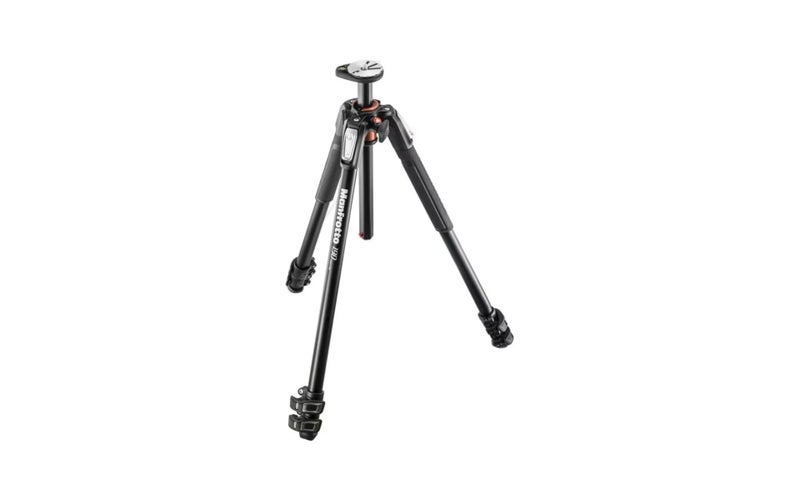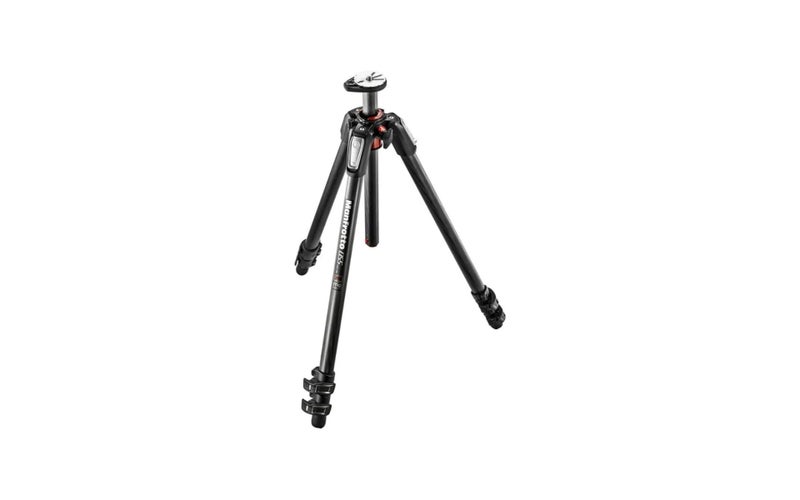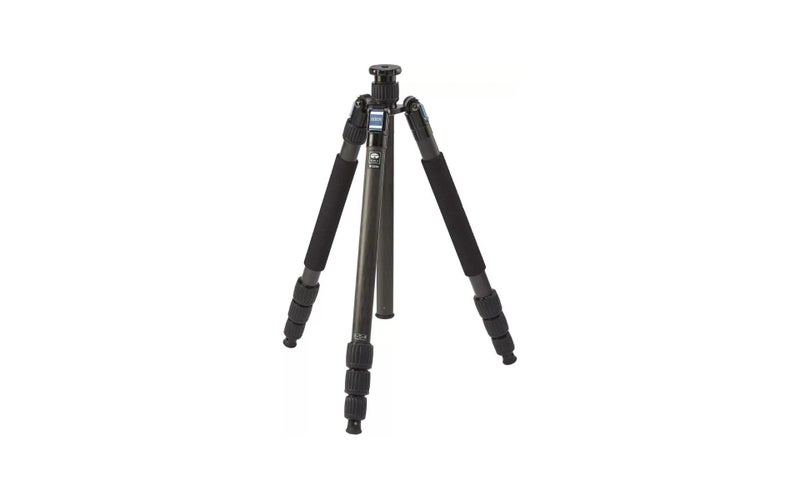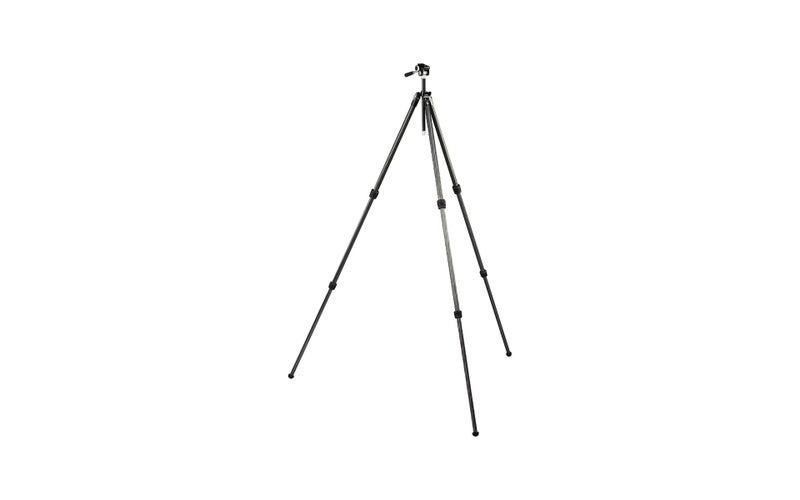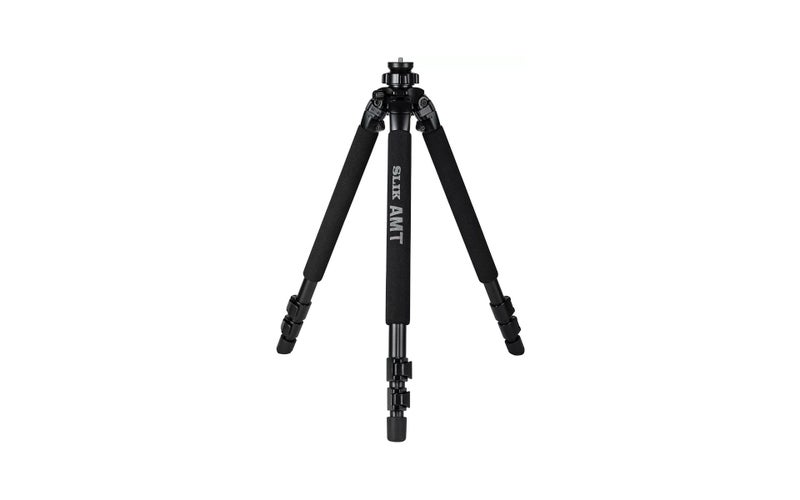We may earn revenue from the products available on this page and participate in affiliate programs.
Consistently placing accurate shots on targets beyond 500 yards requires determination, discipline, teamwork, solid training, and of course, the proper equipment — including spotting scope tripods. Anyone who’s attended an NRA F-class match has likely seen a bewildering array of high-speed low-drag gear ranging from Gucci rifles in exotic calibers to eye-wateringly clear (and expensive!) optics, portable weather stations, ballistic calculators, and more from vendors eager to sell you its latest products. Some of this equipment is necessary, others yield diminishing returns; however, one product that is frequently left out of the spotlight is the mundane, yet essential, spotting scope tripod.
Like any other activity, a solid foundation is essential — be that an understanding of ballistic fundamentals or, in this case, the stability of the spotting scope. Whether for competition or more serious work, the spotter controls the engagement and directs the shooter with corrections for distance and wind. To do this, the spotting scope needs to be rock steady so that the spotter can (1) locate, identify, and, if necessary, range targets, (2) estimate wind at the target location, and (3) communicate corrections to the shooter based on bullet trace and point of impact. Mounting a $3,000 spotting scope atop a $50 photography tripod simply will not do.
To that end, we put together a guide to the best spotting scope tripods on the market. Take a gander and see which spotting scope tripod fits your needs best.
- Best Value: Vortex Optics Highcountry II Tripod Kit
- Best Overall: Manfrotto MT190XPRO3 3 Section Aluminum Tripod
- Editor’s Choice: Manfrotto MT055CXPRO3 Carbon Fiber
- Best Four-Section: Sirui W-2204 Waterproof Carbon Fiber Tripod
- Best Lightweight: Vortex Optics Ridgeview Carbon Tripod Kit
- Best Budget: SLIK Pro 700 DX Tripod
Methodology
In this article, we recommend the best spotting scope tripods for use in long-range (beyond 500 yards) precision rifle shooting. Our selections are based on experience with comparable equipment at Gunsite Academy’s Long Range Precision Rifle course and extensive research including reviews of manufacturer specifications, professional publications, product videos, and other sources.
Our research started with identifying the key characteristics essential to the performance of a quality tripod, namely stability, adjustability, payload capacity, weight, and head options. These characteristics are discussed in detail later in this article in the section “What to consider when buying a spotting scope tripod.”
Our research team then searched for tripods on e-commerce websites including Amazon, Cabela’s, OpticsPlanet, Brownells, Midway, B&H Photography and many more, with a focus on selecting those products that offer an optimal balance between design characteristics. The most promising tripod designs were then selected for in-depth research via consumer and independent third-party print and video reviews, as well as discussions within the Task & Purpose community of recreational shooters, hunters, photographers, and military personnel.
The final research step leveraged all of the data, results, and commentary to develop specific questions for each of the manufacturers. The answers provided by the manufacturers gave us a better understanding of each tripod’s performance in terms of wear and intended use and helped us develop our final set of recommendations.
It is of the utmost importance to those of us at Task & Purpose to ensure that you, our readers, know our commitment to fair and open product reviews and recommendations so that you can trust us to provide you with unbiased, balanced information.
Anyone who’s been following the U.S. Army’s Next Generation Squad Weapon (NGSW) program will be familiar with Vortex Optics, an American-based, veteran-owned company that was recently awarded a contract to produce 250,000 fire control systems for the new 6.8x51mm NGSW rifle platform. Since 1986, Vortex has produced high-quality optics including rifle scopes, spotting scopes, binoculars, reflex and red dot sights, and rangefinders. Vortex also offers a line of excellent tripods suitable for use with its optics platforms. The lineup includes the very affordable High Country II model.
The High Country II tripod is sold as a complete kit which includes a two-way pan and tilt head and weighs in at just four pounds. The payload capacity is a bit on the lighter side at 22 pounds, but still adequate for the task of glassing targets with a spotting scope.
Multiple leg angles and sturdy flip lock levers provide the High Country II with almost as much versatility as the Manfrotto tripods, with a maximum deployed height of 62.5 inches and a minimum height of 11.3 inches.
For price and capability, the High Country II is our Best Value pick for a spotting scope tripod.
- Maximum height: 62.5 inches
- Minimum height: 11.3 inches
- Safety payload: 22 pounds
- Leg sections: 3
- Leg lock type: Flip-lock
- Leg angles: 25, 49, and 70 degrees
- Head included: Yes
- Top attachment: Arca-Swiss quick-release plate
- Closed length: 24.3 inches
- Weight: 4 pounds (including head)
- Material: Aluminum
Includes two-way pan and tilt head
Lifetime warranty
Safety payload could be higher
The Manfrotto MT190XPRO3 is a capable and versatile tripod that easily meets all of our design characteristics at an affordable price. Each of the legs can be independently set and locked to one of four different angles, and the center column can also pivot 90-degrees so that it is parallel with the ground, providing incredible versatility. The flip-lock mechanisms on each leg click solidly into place and the entire tripod is rock-steady even when set to its full height of 63 inches on a windy desert plateau.
At a weight of 4.4 pounds, this Manfrotto tripod for a spotting scope is in the middle of the pack when it comes to weight, but also claims the highest payload capacity of all the aluminum tripods we reviewed.
The top attachment consists of a simple 3/8-inch threaded stud, but Manfrotto offers a number of different head options for purchase. For precision shooting applications, we recommend the Manfrotto 410 3-Way, Geared Pan-and-Tilt Head with 410PL Quick Release Plate. Simply attach the quick release plate to the bottom of your spotting scope and you’re good to go for some serious fieldwork.
Note: The Manfrotto 190XPRO3 equipped with the 410-series geared head supporting a Leupold Mark 4 12-40x60mm Tactical Spotting Scope with TMR reticle was used by the author to good effect at the Gunsite Academy Long Range Precision Rifle Class under austere conditions against multiple concealed targets positioned at unknown distances.
- Maximum height: 63 inches
- Minimum height: 3.5 inches
- Safety payload: 33 pounds
- Leg sections: 3
- Leg lock type: Flip-lock
- Leg angles: 25, 46, 66, and 88 degrees
- Head included: No
- Top attachment: ⅜-inch threaded stud
- Closed length: 23.2 inches
- Weight: 4.4 pounds
- Material: Aluminum
Extremely wide range of adjustment
Superb payload capacity
Excellent balance of weight, performance, and price
Head assembly not included
The MT055CXPRO3 is the carbon-fiber big brother to Manfrotto’s MT190XPRO3 aluminum tripod. Suffice it to say that everything the MT190XPRO3 can do, the MT055CXPRO3 can do with a higher payload and a bit more panache — for a price. At the e-commerce websites we visited during our product research, the carbon-fiber tripod was generally double the price of the aluminum model.
With that said, if your use cases demand the highest payload capacity tripod you can get your hands on, the MT055CXPRO3 won’t let you down. For the majority of spotting scope applications, however, we recommend going with the aluminum model and putting your savings towards a quality head assembly.
The MT055CXPRO3 is hands-down the best heavy-duty spotting scope tripod and our pick for Editor’s Choice.
- Maximum height: 67 inches
- Minimum height: 3.5 inches
- Safety payload: 44.0 pounds
- Leg sections: 3
- Leg lock type: Flip-lock
- Leg angles: 25, 46, 66, and 88 degrees
- Head included: No
- Top attachment: ⅜-inch threaded stud
- Closed length: 24.8 inches
- Weight: 4.4 pounds
- Material: Carbon fiber
Highest payload available
Expensive
Four-section tripods offer a smaller collapsed size without sacrificing maximum deployed height at the cost of a small increase in weight due to the additional hardware required. In the case of the Sirui W-2204, this weight penalty was offset through the use of carbon fiber legs, resulting in an overall design that is both lightweight and the most compact tripod for a spotting scope of all the models that we reviewed.
Despite its small footprint, the Sirui W-2204 packs some serious chops for heavy-duty use in the field, including a 33-pound payload capacity and Sirui’s WPS system for preventing dirt, dust, and water from entering the tripod legs. Anyone who’s had to completely disassemble their tripod to dry it out after getting drenched in the rain will appreciate this feature, as well as spotters who operate in sandy conditions.
An interesting feature, albeit one of limited utility for use with a spotting scope, is that one of the legs can be detached and paired with the tripod’s central column, creating a functional monopod.
As with many other tripods on this list, the W-2204 doesn’t include a head assembly. Unfortunately, Sirui only offers ball heads which are generally ill-suited for use with a spotting scope; therefore, a third-party head assembly will likely be required for use with this tripod.
- Maximum height: 70.1 inches
- Minimum height: 6.1 inches
- Safety payload: 33.1 pounds
- Leg sections: 4
- Leg lock type: Twist-lock
- Leg angles: Not specified
- Head included: No
- Top attachment: Reversible ⅜-inch and ¼-inch threaded stud
- Closed length: 20.5 inches
- Weight: 3.9 pounds
- Material: Carbon fiber
Water, dirt, and dust protection
Lightweight, small form factor
Head assembly not included
OEM heads not suitable for spotting scope applications
The Ridgeview is Vortex Optics ultra-lightweight carbon fiber model suitable for use on long treks deep into the field in search of elusive quarry. At just 3.2 pounds (including the two-way pan and tilt head), the Ridgeview is the lightest tripod on our list, but its featherweight status doesn’t mean any loss of features. With a payload capacity of 22 pounds and even more adjustment range than the High Country II model, the Ridgeview delivers outstanding performance.
As with all carbon fiber tripods, the price increase over aluminum designs is substantial with the Ridgeview costing double that of the High Country II tripod. That said, experienced hunters know that ounces equal pounds and pounds equal pain, so if your next adventure calls for the best lightweight tripod for your spotting scope at a price that won’t completely break the bank, the Ridgeview is a respectable choice.
- Maximum height: 73.8 inches
- Minimum height: 8.3 inches
- Safety payload: 22 pounds
- Leg sections: 3
- Leg lock type: 1/4 turn
- Leg angles: 24, 52, and 80 degrees
- Head included: Yes
- Top attachment: Arca-Swiss quick-release plate
- Closed length: 29 inches
- Weight: 3.2 pounds (including head)
- Material: Carbon fiber
Includes two-way pan and tilt head
Lifetime warranty
Safety payload could be higher
If your spotting scope purchase consumed the majority of last month’s paycheck, fear not, for the SLIK Pro 700 DX AMT tripod can get the job done without sending you deep into the red. Priced at under $100 at the time of writing, the Pro 700 offers a low-cost solution, especially if you already have a serviceable two-way pan and tilt head in your spare parts box. Alternatively, SLIK offers the Pro 700 with a three-way pan, tilt, and roll head for just under $200, although given the low payload capacity and heavyweight it might be better to opt for the Vortex Optics High Country II instead.
- Maximum height: 70.7 inches
- Minimum height: 10.8 inches
- Safety payload: 19.8 pounds
- Leg sections: 3
- Leg lock type: S.R.L. flip-lock
- Leg angles: Not specified
- Head included: No
- Top attachment: ⅜-inch threaded stud
- Closed length: 29.9 inches
- Weight: 5.5 pounds
- Material: AMT alloy
Lowest base cost
Very heavy
Low payload capacity
Our verdict on spotting scope tripods
A quality tripod is an essential accessory for a spotting scope. Our top three picks, the Vortex Optics High Country II, the Vortex Optics Ridgeview Carbon, and the Manfrotto MT190XPRO3 represent the best value, light weight, and best overall selections, respectively. If you’re shopping on a budget and weight isn’t a major factor, the SLIK Pro 700 DX is also a good choice.
What to consider when buying spotting scope tripods
Key features of a spotting scope tripod
While a tripod may seem to be a relatively simple piece of equipment at first glance, there are several factors to consider when selecting one for use with a spotting scope.
Stability
Three points determine a plane, so you might expect that all tripods should be equally stable; however, this is not the case. The quality of the locking mechanisms employed on the legs, as well as the types of materials used in the legs themselves, can significantly affect both overall stability and vibration resistance. This can be mitigated somewhat by suspending a weight from the central column, but this solution is more of a patch than a feature. Ultimately, stability is the most important design characteristic to consider when purchasing a tripod, as it will directly impact the ability to make precise observations through the scope.
Adjustability
You should carefully consider the full range of use cases for a tripod prior to purchase. Will you operate the tripod only from a standing position in the open? While prone next to a rifleman under concealment? In uneven terrain? In water or sand? Tripods with a wide range of adjustability can fluidly transition between multiple use cases with ease. For example, the Manfrotto MT190XPRO3 has four different leg angle settings (25, 46, 66, and 88 degrees) so that the tripod can be deployed in configurations ranging from 63 inches tall to just 3.5 inches off the ground.
Payload capacity
Even with a truly massive objective lens, spotting scopes rarely exceed 10 pounds in weight; however, if you plan to use your tripod for digital photography, the weight of the camera body and the lens — which exerts a cantilevered load on the tripod — must also be considered. As a general rule, and allowing for a substantial safety margin, a tripod with a load rating of 20 pounds or more should be adequate for all spotting scope applications.
Alternatively, tripods with sufficient payload capacity can also be used to support a rifle in the field with the appropriate attachment hardware, providing outstanding stability for the shooter. For this use case, the minimum load rating should be north of 30 pounds to account for both the weight of the rifle and recoil when firing.
Weight
If you will be carrying the tripod over any significant distance, weight can become a significant concern; however, sacrificing stability, adjustability, and payload capacity to save a few ounces is a poor trade-off. Excluding the weight of the head assembly (included in some of the tripods listed above), all of the tripods we’ve recommended except the SLIK Pro 700 DX weigh less than five pounds, with some carbon fiber models weighing as little as three pounds.
While it may be tempting to automatically equate weight savings with exotic materials such as titanium and carbon fiber, a well-designed tripod manufactured from aluminum can still provide great performance with minimal weight.
Manufacturers may also choose to use the high stiffness of carbon fiber to increase payload capacity rather than to reduce weight. The Manfrotto MT055CXPRO3 weighs the same as its aluminum counterpart but is able to support a 33 percent heavier load. In contrast, the Vortex Optics Ridgeview — the lightest tripod on our list — weighs less than three pounds (without head) but is still capable of supporting a respectable 22-pound load.
Head design
The head serves as the interface between the tripod and the spotting scope (or whatever other equipment you intend to mount atop the tripod). While there are many types of heads available depending on the intended application, only two are suitable for use with a spotting scope: a pan and tilt head or a geared head.
Pan and tilt heads
The pan and tilt head is relatively inexpensive, lightweight, simple to operate, and suitable for a variety of applications. It consists of a mounting plate for the scope which can be independently moved through both the pan (yaw) and tilt (pitch) axes. Some pan and tilt heads also allow the scope to rotate through the roll axis as well, although these are less common. The orientation of the scope is controlled via a twist-lock device on each axis. Higher-quality heads will also include a graduated scale on each axis of rotation, as well as a single spirit level.
Geared heads
The addition of gears increases both precision and cost over the simple pan and tilt head. Geared heads almost always include scales for each axis so that the scope can be quickly re-indexed to a previously identified target with separate controls for gross and fine adjustments. Geared heads are the best tripod heads for spotting scopes used in precision shooting applications, especially if target distance must be estimated using the scope’s reticle.
Spotting scope tripod pricing
Expect to pay around $200 for a tripod that is suitable for use with a spotting scope. Tripods in this price range will be manufactured using aluminum alloys and may or may not come with a head depending on the manufacturer.
For carbon fiber tripods, expect to pay upwards of $400; however, be sure to read the full product specifications if you’re searching for a lightweight tripod, as some carbon fiber models weigh just as much as aluminum tripods but have a higher payload capacity.
Tips and tricks
Ultra-fine adjustments
Very fine changes to the position of a spotting scope can be made quickly by applying a small twisting force with one’s hands against the legs of the tripod. This technique is most useful when reorienting the scope on the point of impact to decrease the time required to provide a wind correction to the shooter.
FAQs about spotting scope tripods
Q: Will any tripod work with a spotting scope?
A: Yes, although an adapter may be required to mate the scope to the top attachment of the tripod based on the thread pitch of the stud. We recommend purchasing a quick-release locking plate of a type compatible with the top attachment of the tripod.
Q: Can you hold a spotting scope?
A: No. Even though spotting scopes are variable power, the minimum magnification level is generally above 10x which is far too high to hold steady without external support.
Q: How do spotting scopes attach to tripods?
A: While it’s generally possible to screw the spotting scope directly to the top attachment stud of a tripod, the preferred method is to use a quick-release locking plate. The plate consists of two parts, one which is permanently mounted to the tripod and the other to the base of the scope.
Q: Can you use binoculars as a spotting scope?
A: No. Most binoculars have a smaller objective lens and considerably less magnification than a spotting scope and lack a reticle. The purpose of binoculars is to scan for potential targets, then use the spotting scope to zoom in on the target of interest.
Q: Are spotting scope mounts universal?
A: No. You should check and make sure that the stud size and thread pitch between your spotting scope and tripod match. If you intend to purchase a quick-release locking plate, it should be of the type that is supported by your tripod’s manufacturer.
